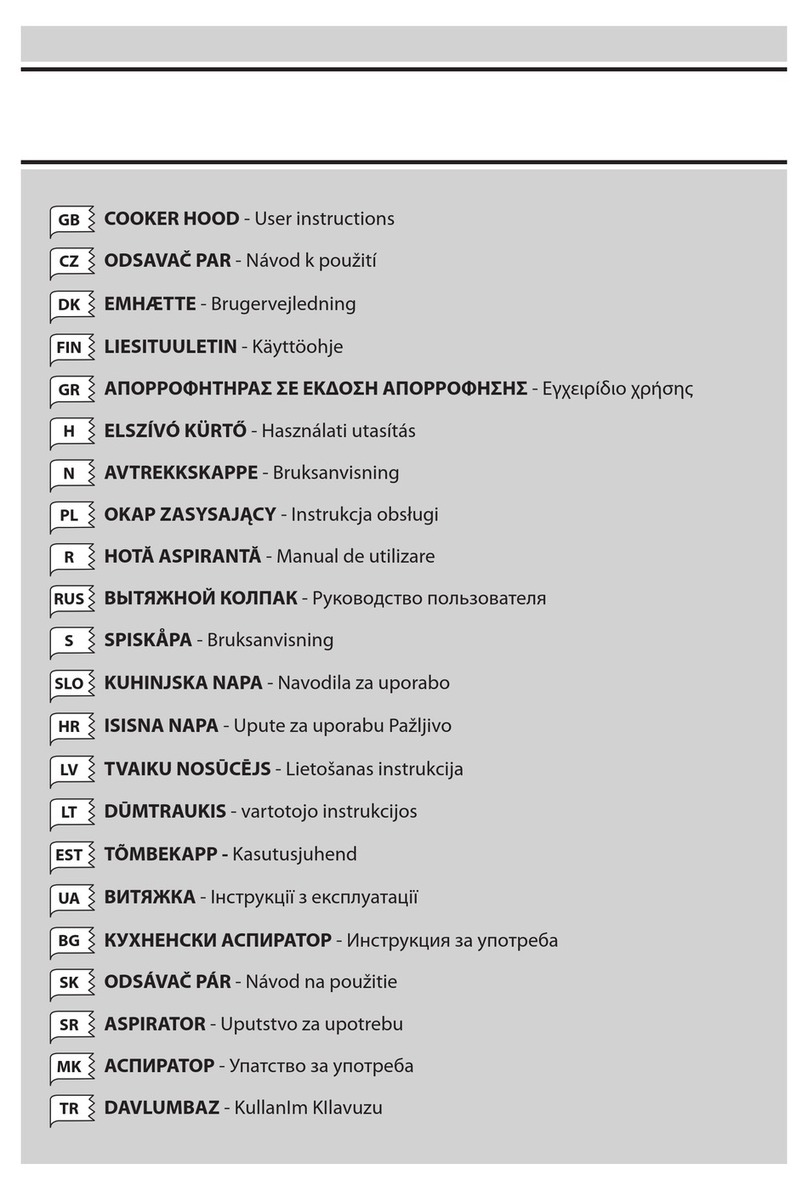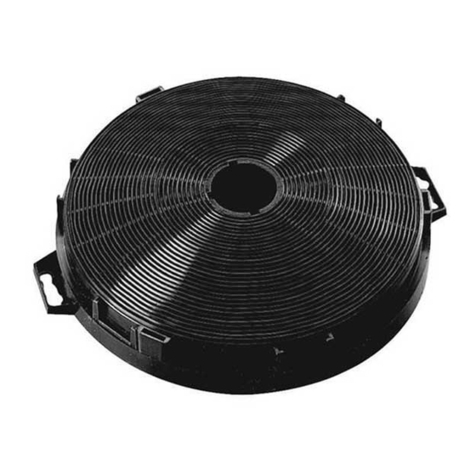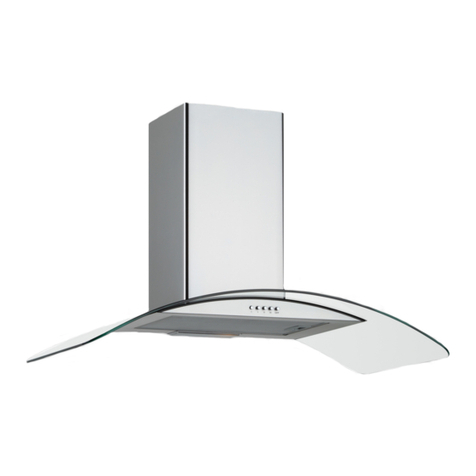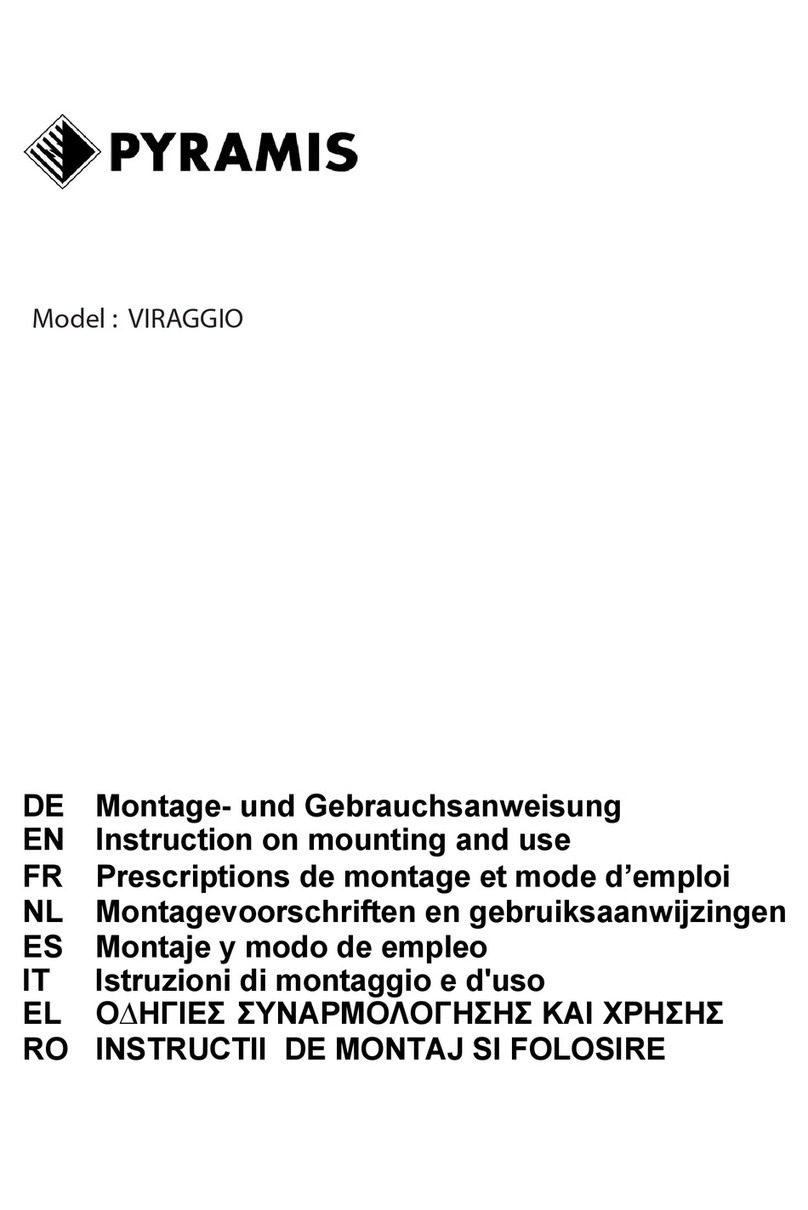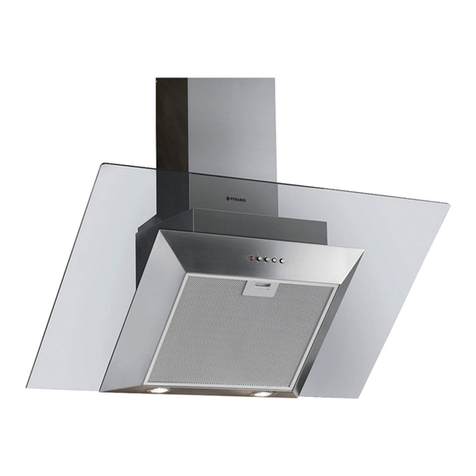
8
IT - Istruzioni di montaggio e d'uso
Attenersi strettamente alle istruzioni riportate in questo
manuale. Si declina ogni responsabilità per eventuali incon-
venienti, danni o incendi provocati all'apparecchio derivati
dall'inosservanza delle istruzioni riportate in questo manuale.
La cappa è concepita per l'aspirazione dei fumi e vapori della
cottura ed è destinata al solo uso domestico.
• E' importante conservare tutti i manuali che accompa-
gnano il prodotto per poterli consultare in ogni momento.
In caso di vendita, di cessione o di trasloco, assicurarsi
che restino insieme al prodotto.
• Leggere attentamente le istruzioni: ci sono importanti
informazioni sull'installazione, sull'uso e sulla sicurezza.
• Non effettuare variazioni elettriche o meccaniche sul
prodotto o sulle condotte di scarico.
• Verificare l'integrità della cappa prima di procedere con
l’installazione. In caso contrario contattare il rivenditore e
non proseguire con l'installazione.
Nota: I particolari contrassegnati con il simbolo "(*)" sono
accessori opzionali forniti solo in alcuni modelli o particolari
non forniti, da acquistare.
Avvertenze
• Prima di qualsiasi operazione di pulizia
o manutenzione, disinserire la cappa dal-
la rete elettrica togliendo la spina o stac-
cando l’interruttore generale
dell’abitazione.
• Per tutte le operazioni di installazione e
manutenzione utilizzare guanti da lavoro.
• L’apparecchio può essere utilizzato da
bambini di età non inferiore a 8 anni e da
persone con ridotte capacità fisiche, sen-
soriali o mentali, o prive di esperienza o
della necessaria conoscenza, purchè sot-
to sorveglianza oppure dopo che le stes-
se abbiano ricevuto istruzioni relative
all’uso sicuro dell’apparecchio e alla
comprensione dei pericoli ad esso ine-
renti.
• I bambini devono essere controllati af-
finché non giochino con l’apparecchio.
• La pulizia e la manutenzione non deve
essere effettuata da bambini senza sor-
veglianza.
• Il locale deve disporre di sufficiente ven-
tilazione, quando la cappa da cucina vie-
ne utilizzata contemporaneamente ad al-
tri apparecchi a combustione di gas o al-
tri combustibili.
• La cappa va frequentemente pulita sia
internamente che esternamente (ALME-
NO UNA VOLTA AL MESE), rispettare
comunque quanto espressamente indica-
to nelle istruzioni di manutenzione.
L’inosservanza delle norme di pulizia del-
la cappa e della sostituzione e pulizia dei
filtri comporta rischi di incendi.
• E’ severamente vietato fare cibi alla
fiamma sotto la cappa.
• Per la sostituzione della lampada utiliz-
zare solo il tipo lampada indicato nella
sezione manutenzione /sostituzione lam-
pada di questo manuale.
L’impiego di fiamma libera è dannoso ai filtri e può dar luogo
ad incendi, pertanto deve essere evitato in ogni caso.
La frittura deve essere fatta sotto controllo onde evitare che
l’olio surriscaldato prenda fuoco.
ATTENZIONE: Quando il piano di cottura è in funzione le parti
accessibili della cappa possono diventare calde.
• Non collegare l’apparecchio alla rete elettrica finche
l’installazione non è totalmente completata.
• Per quanto riguarda le misure tecniche e di sicurezza da
adottare per lo scarico dei fumi attenersi strettamente a quan-
to previsto dai regolamenti delle autorità locali competenti.
• L’aria aspirata non deve essere convogliata in un condotto
usato per lo scarico dei fumi prodotti da apparecchi a combu-
stione di gas o di altri combustibili.
• Non utilizzare o lasciare la cappa priva di lampade corretta-
mente montate per possibile rischio di scossa elettrica.
• Mai utilizzare la cappa senza griglia correttamente montata!
• La cappa non va MAI utilizzata come piano di appoggio a
meno che non sia espressamente indicato.
• Utilizzare solo le viti di fissaggio in dotazione con il prodotto
per l'installazione o, se non in dotazione, acquistare il tipo di
viti corretto.
• Utilizzare la lunghezza corretta per le viti che sono identificati
nella Guida all'installazione.
• In caso di dubbio, consultare il centro di assistenza autoriz-
zato o personale qualificata similare.






